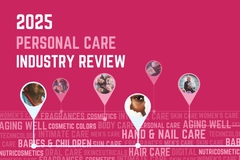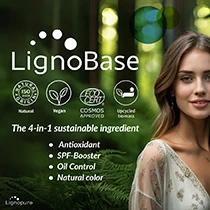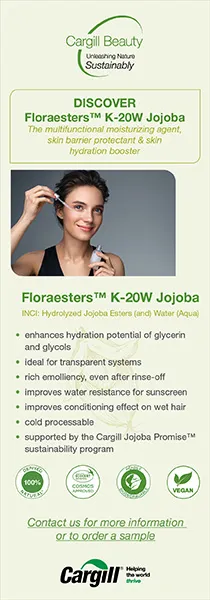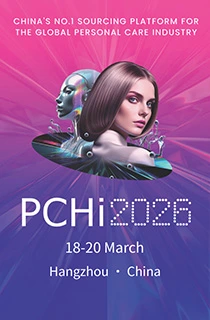Cosmetic sauce: Upcycled apples new alternative to microplastic-based rheology modifiers
23 Feb 2023 --- Researchers in Italy are presenting Royal Gala apple pomace (AP) as an alternative to microplastic-based thickening agents used in cosmetics or nutraceuticals. With an ever-increasing search for natural materials to cap pollution levels, thickening agents can be derived from agri-food waste.
In the study, AP underwent three different treatments and drying conditions – oven drying at 55°C for 12 hours, homogenization and oven drying at 55°C for 12 h and homogenization and freeze-drying for 12 hours.
“The highest values of total phenol content and antioxidant capacity were found for oven-dried AP (250 to 400 µm) and homogenized and freeze-dried (> 400 µm) samples,” the researchers find.
Thus, these two were concluded to be “most suitable” for forming hydrogels. Whereas the AP that was just oven dried at 55°C had the “best performance” for creating a stable hydrogel.
“From a planet perspective, upcycling has to be the future of beauty, but also, from a brand perspective, it should be,” Anna Brightman, co-founder of UpCircle Beauty, previously told PersonalCareInsights.
Microplastic polymers
The authors explain that thickening agents modify rheological and textural properties. They improve the quality in terms of consistency of cosmetics and also dermatological medicines for better skin feel, usability and stability.
Currently, many polymers are used as thickening agents. However, as these polymers are mainly synthetic and semi-synthetic, they can be classified as microplastics based on recent European restrictions, according to the authors. The European Commission has proposed stricter rules on ambient air, surface and groundwater pollutants requiring cosmetic companies to pay to remove “toxic micro-pollutants” from EU wastewater.
Therefore, increasing restrictions drive the search for biomaterials as exposure to microplastics is becoming a “serious health problem” for humans. “The accumulation of microplastics in the environment is responsible not only for environmental pollution but also for the increase in the incidence of human and animal diseases.”  AP that was oven dried at 55°C had the “best performance” for creating a stable hydrogel.
AP that was oven dried at 55°C had the “best performance” for creating a stable hydrogel.
Is natural-based enough?
Synthetic polymer replacements are categorized into four categories – “gum-based (e.g., guar gum, xanthan gum), protein-based (e.g., soy protein), plant-based (e.g., starch) and microbe-based (e.g., microalgae),” inform the researchers.
Although finding natural alternatives is valuable, they underscore the problem of depleting environmental sources. This is why it is “interesting” to use alternative sources such as food waste with the potential to be reused.
Moreover, by-products can modify the rheological and functional properties of cosmetics and foods while improving the nutritional balance.
On the other hand, Michal Benmayor, VP for global perfumery sustainability at Firmenich, previously told PersonalCareInsights that the opposition between naturals and synthetics is being revoked and has shifted into renewability.
“Today, there is increasing public awareness that ‘natural equal safe and sustainable’ is not always true. Synthetic molecules can be more sustainable, in terms of eco-efficiency, by using less energy and water consumption during the development process and often a safer alternative (when it comes to allergenicity, for example),” adds Benmayor of Firmenich.
However, based on Benyamor explanation, the question of environmental pollution remains.
Recent upcycling solutions
Other studies have reviewed thickening agents from tomato pomace, peels of tropical fruits and grape pomace, cite the authors. Ground avocado seeds were “for the first time” upcycled to replace the banned microplastic beads last September.
Due to its valuable bioactive compounds and phytochemicals, citrus waste can also be used in perfumery and cosmetics. Thailand-based researchers also found that young durians could be upcycled for antioxidants, skin moisturizers and UV protection.
BASF recently collaborated with RiKarbon to leverage its technology for converting bio-waste into “unique emollient chemical structures” for personal care formulations. Clariant recently launched a rheology modifier, Aristoflex Eco T, that combines synthetic polymers’ performance with the environmental profile of biopolymers.
Another study found that organic grape waste from winemaking has rich antioxidant phenolic compounds suitable for use in skincare products.
Dow and LVMH Beauty collaborated on packaging solutions to upcycle cooking oil and waste feedstock for LVMH’s perfume and cosmetic products. Also, Kirin Holdings and FANCL collaborated to develop cosmetics packaging using the by-products of beer production.
By Venya Patel













